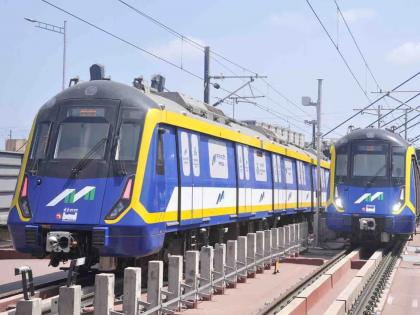Mumbai: Citizens Prefer Buying Houses Near Metro Station, Reveals Survey
By Lokmat English Desk | Updated: May 20, 2025 21:47 IST2025-05-20T21:46:49+5:302025-05-20T21:47:25+5:30
As Mumbai’s metro network becomes increasingly operational, a recent survey highlights a shift in home-buying preferences. Mumbaikars are now ...

Mumbai: Citizens Prefer Buying Houses Near Metro Station, Reveals Survey
As Mumbai’s metro network becomes increasingly operational, a recent survey highlights a shift in home-buying preferences. Mumbaikars are now prioritizing properties located near metro stations. The convenience of faster commutes is driving this trend, and developers are reaping the benefits. In the last six months, property prices near metro stations have seen a notable increase of at least 20%, indicating the growing demand for such locations in the city’s rapidly evolving real estate landscape.
Currently, 70 kilometers of Mumbai’s metro lines are operational, out of the total network under construction. This network is set to expand further, reaching 100 kilometers in the coming months. Over the next three years, the metro grid is expected to cover as much as 300 kilometers. With this rapid development, the accessibility offered by metro connectivity is becoming a key consideration for homebuyers, significantly influencing the city's housing market and development patterns.
Also Read: Pune Shocker: Gangster Attempts to Murder Youth Over Alleged Association with Rival in Budhwar Peth
The metro’s ability to reduce travel time is one of its most attractive features for daily commuters. The metro is helping reduce travel times from western suburbs like Borivali to the city. Consequently, these areas are seeing increased interest from buyers, especially those who value time-saving commutes. This has led to a noticeable shift in demand toward areas with better transportation infrastructure, making them preferred residential hotspots.
Interestingly, young buyers make up a significant portion of those purchasing homes near metro stations. Their preference for convenience and connectivity is reshaping the dynamics of Mumbai’s housing market. However, the survey notes that in older buildings in the same localities, prices are about 20% lower. This price gap reflects changing buyer priorities and growing interest in modern, well-connected homes.
Open in app